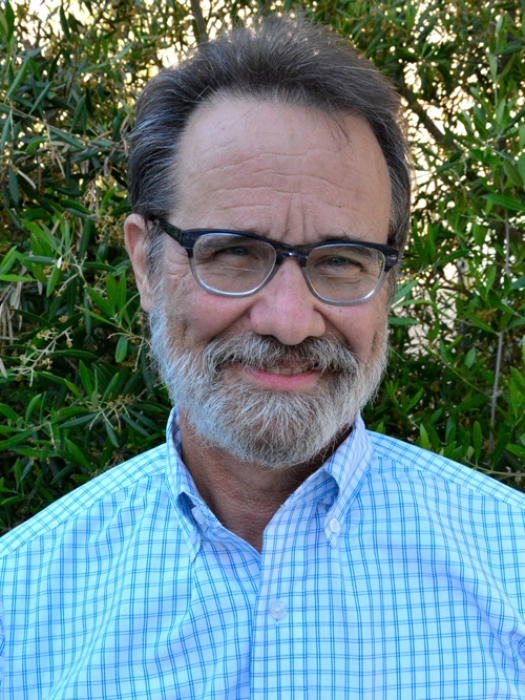wayneanderson.jpg

Wayne Anderson, N.D.
After meeting Dr. Wayne Anderson at a Lyme Disease Symposium in conjunction with the ACAM Conference 2010, FAIM was extremely impressed with his knowledge and experience in addressing Lyme disease. Dr. Anderson uses formulas known as the Byron White Formulas to address not only Lyme disease, but the co-infections which typically are present in most Lyme cases.
Dr. Anderson has practiced medicine for 30 years and has incorporated the Byron White Formulas into his practice with great results. He uses Naturopathic and allopathic tools in this endeavor. In the early 90's he met Dr. Burrascano who inspired him to consider that many of his Chronic Fatigue cases could be Lyme disease. After treating many patients with the antibiotic protocol and seeing improvement he concluded that Lyme disease could be the underlying reason for scores of other diagnoses. He now treats patients from all over the United States and continues to be amazed at the prevalence of these infections.
Since becoming aware of this in the early 90's he implemented protocols using natural, functional medicine and antibiotic agents. This approach helped but he was still not satisfied with the results. He researched Lyme and gained a much greater understanding of the true nature of the infection. Exciting research has brought tremendous improvements to the approaches for treatment. Armed with this new knowledge he again began using herbal, nutraceutical and Homeopathic protocols. Then he was introduced to the Byron White Formulas (BWFs) which he now believes to be the missing piece in Lyme disease treatment. Over the last six years these formulas have helped thousands of his patients and have also clarified the nature of how Lyme and co-infection bacteria behave.
Dr. Anderson has researched these infections with experts worldwide. With the input of Byron White he has developed protocols that are extremely effective in patient therapy. Dr. Anderson became motivated to teach these principles and has presented at many major conferences including ILADS, ACAM, OHM, and LIA, and well as select private symposiums on CFIDS, Lyme, and Autism.
Lyme disease as a functional illness
Under this protocol, Lyme disease is viewed more as a functional illness than an infectious disease. There are several key factors that relate to this shift in thinking. One is the view that the nature of Lyme's pathology was related more to the compromise of cell function that arises. The greater the load in the cell, the more severe the symptoms. As a result, the symptoms vary from person to person depending on their individual strengths and weaknesses, creating inconsistencies in presentation. A third factor is that lab tests for Lyme aren't precise enough to help navigate through the various elements of tick-borne infections. And finally, as a result of antiquated policy, the CDC has not updated their view of Lyme disease.
There are common diseases that can mimic Lyme disease and also be triggered by Lyme. Some of these include Multiple Sclerosis, Parkinson's, Rheumatoid Arthritis, Lupus, CIFDS, Chemical Sensitivity, Bipolar, ADHD, ADD, Autism, Fungal Hypersensitivities, Hashimoto's Thyroiditis, Graves Disease, Hypothyroid, Adrenal insufficiency, Addison's disease, mental issue and hormone transition issues, to mention a few.
After treating thousands of patients for twenty years Dr. Anderson concluded several things. Lyme disease is not just Lyme, but includes a family of pathogens consisting of Borrelia (BbLO), Babesia Like Organisms (BabLO), Bartonella Like Organisms (BLO), Ehrlichia, Anaplasma, Mycoplasma, fungal toxins, heavy metals and chemical toxins. All of these being neurotoxic in nature. There are common mechanisms of action with all of these which can result in inflammation, build up in the cell and disrupt self-regulatory mechanisms.
With this in mind, Dr. Anderson finds that his treatment has three aspects. First is immune modulation, second is killing and unloading the dominant pathogen, and finally, removing the waste and rejuvenating the terrain of the body.
He has developed eight key principles of Chronic Lyme Disease.
- There is wisdom in the body's symptom presentation. The immune system will prioritize what it views as the biggest threat and will offer up a symptom. The Byron White Formulas (BWFs) are immune provoking agents that help the immune system reduce the load.
- There is tremendous organism diversity with a great number of species, but he has found the BWFs act as general microbials and cover a broad spectrum.
- When the immune system cannot resolve and get rid of a neurotoxin, it will find a way to store it in fat, capillary beds, artery walls, the bowel, liver, adipose tissue, vascular system and the lymph. BWFs detox the system.
- It is highly likely that a patient is infected with not only the Borrelia but with one or more of the co-infections also known as tick-borne diseases. The symptoms presenting will be an indication of what the immune system perceives as the dominant threat. By using Dr. Anderson's "Challenge" protocol with the Byron White Formulas (BWFs) it is possible to determine the pathogen that is dominant at the moment.
- Every patient has their individual strengths and weaknesses. Since Lyme symptoms are really a reflection of the affect on the body/cell function, no two Lyme patients will have the exact same symptoms. BWFs work on multiple organ systems so the patient can cope with the symptoms more effectively.
- Lyme and its co-infections BabLO, BLO or BbLO all have different patterns. The practitioner needs to learn to connect the dots until the patient picture develops to determine correct treatment in the moment. BWFs support the immune system so it is easier to connect these dots and see the whole picture. The following are typical symptoms of these co-infections.
- Bartonella Like Organisms Subset
- Keynote: Bottoms of feet painful, burning, and/or numb. Pain; joint specific pain, pain in general. Lymphadenopathy. Gastritis. Conjunctivitis. Mildly elevated liver enzymes and/or splenomegaly. Headache. Feeling hot to occasional fever.
- Mood: Moderate to severe
- Cognitive: moderate to severe
- Pain: Severe
- Sleep: Significant disruption
- Babesia Species Subset
- Keynote: Severe depression (suicidal ideation) and/or severe agitation. Drenching sweats with chill and/or hot, temperature intolerance. SOB. Tachycardia.
- Mood: Severe
- Cognitive: Severe
- Pain: Seldom (occasional ankles/feet, wrists/hands)
- Sleep: Disruptive sleep, frequent waking
- Borrelia Dominant Subset
- Keynotes: Dominant when rare, aggressive organisms are present, or with repeated exposures over the years. Usually underlying other more dominate pathogens, and treated later. Slowest growing and most neurologically generalized. Prioritize when CD57 is below 30 with HLA 15-3-51 and /or 16-6-53.
- Mood: Moderate
- Cognitive: Moderate
- Pain: Moderate to severe, generalized achy, unilateral and wandering
- Sleep: Mildly disruptive
- Bartonella Like Organisms Subset
- In order to heal, the layers must be unraveled. As the layers are peeled back, the pathogens are systematically unloaded and the symptoms subside. BWFs help release these layers.
- The patient's response to the "Challenge" protocol confirms the patient's diagnosis.
There are three steps for making the diagnosis according to Dr. Anderson. He says:
- Create a hypothesis regarding the presumed dominant pathogen (after taking a detailed history, doing a physical exam, and evaluating relevant lab work). First we need to have a higher index of suspicion for the prevalence of tick-borne pathogens. Much has been said about Lyme disease being a hidden epidemic. Where we got off track was thinking that Lyme disease was just about Borrelia.
- When considering the Borrelia seropositive patient or the patient with a symptom picture that is suspect of Borrelia, we must consider the very likely probability of one or more co-infections.
- A positive lab test for a co-infection can be reassuring, and is present about 30% of the time. 70% of patients with a negative test respond and improve symptomatically when treated with protocols that work against BabLO or BLO.
So it all comes down to pattern recognition (Clear, Muddy, Mixed).
- Challenge the patient with a therapeutic intervention that is as specific as possible to the suspected pathogen.
- The patient's response to this variable is as good as we get for confirming the diagnosis.
Review of Definition of Terms
Dr. Burrascano's Definitions for Lyme.
- Lyme disease (interchangeable with Lyme): "This infection includes not only B. burgdorferi but the many co-infections that may result."
- Chronic Lyme disease: "In the chronic form of Lyme, other factors can take on an ever more significant role; immune dysfunction, opportunistic infections, co-infections, biological terrain, metabolic and hormonal imbalances, deconditioning, etc."
- Lyme Borreliosis: "Solo infection with B. burgdorferi."
Dr. Anderson's Definition of Terms:
- Neurotoxin Illness: Inflammation related to tick borne illness, fungal or chemical toxin.
- Functional Medicine: Focus on improving physiologic function as the primary way of improving the health of patients with chronic illness.
- Provoking agent: Prescription, herbal or homeopathic that can augment the immune system to have a beneficial effect. This could result in an aggravated response (Herx reaction) or improve the patient's symptom picture.
- Symptom Picture: Symptoms from various organ systems that when viewed as a whole can reflect the immune systems reaction to a specific pathogen.
- Load: Pathogenicity of neurotoxin illness is related to the additive effect of lipophilic substances.
- Clear Pattern: Vital immune response in a healthy patient that recognizes an aggressive co-infection. The resulting symptoms are related to the recognition and response of the immune system to that pathogen as a perceived threat.
- Muddy Pattern: Immune response that is less well organized in its defense against a co-infection. This patient can have co-morbidities that result in a less defined response. This patient usually has chemical or metal toxins that are compromising the system.
- Mixed Pattern: This patient also can have equally aggressive pathogens (usually Babesia and Bartonella) that result in elements of each in a changeable dynamic pattern.
Dr. Anderson's explanation of the benefits of the Byron White Formulas (BWFs) in Lyme disease Case Management:
- These formulas are powerful immune system provoking agents; a one-drop increase can evoke a response.
- This response is the best indication of the dominant pathogen.
- The formulas have flexible dosing. Unlike antibiotics they remain effective at any dose. Patients will respond individually in relation to pathogen load, and their overall strengths and weaknesses.
- There is no risk of developing organism resistance.
- A Herx response can develop from exceeding the correct dosage for the individual patient.
- This aggravated response will subside as the dose is decreased.
- When the dose is decreased there is a one to three day wash out period before the patient will get back to their pre-Herx baseline.
- The historical uses of the herbs in these formulas indicate that they will focus on a primary pathogen and also have multiple secondary pathogen responses.
- The BWFs enhance the immune suppressed patient. The clinical picture clarifies with their use making it easier for the practitioner to decide when to adjust treatment.
- These formulas are safe without toxicity.
- And unlike antibiotics they are virtually side effect free. If there is a response it will be immune, endocrine, neurological and energetically supportive to the healing process.
For more information, visit Dr. Wayne Anderson's website.
Thanks to Dr. Wayne Anderson for the information in this article.



